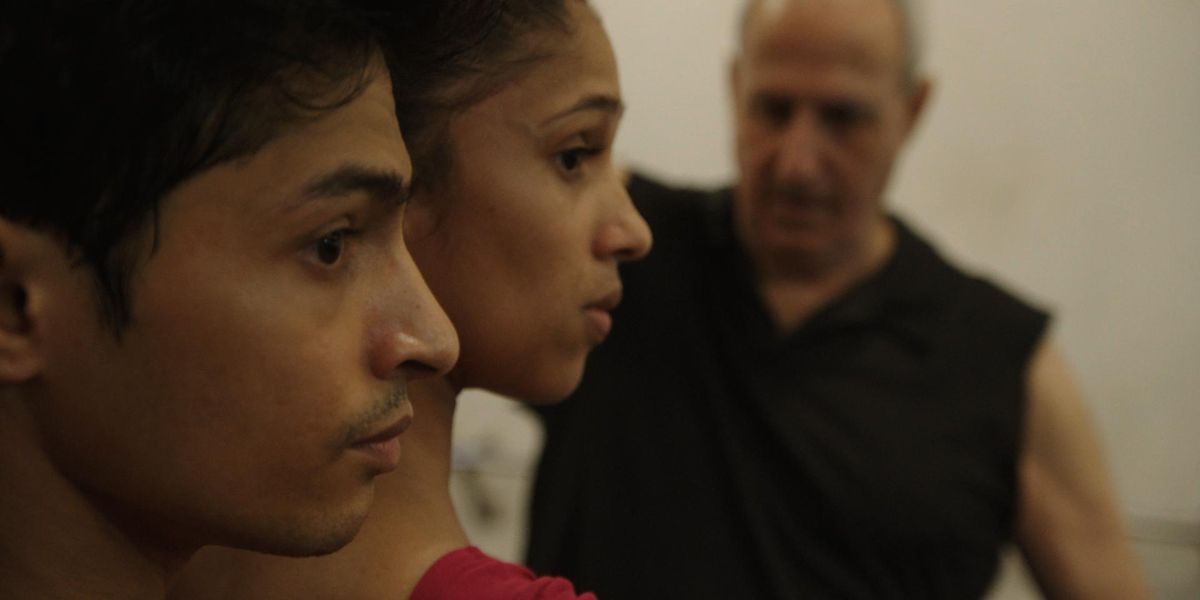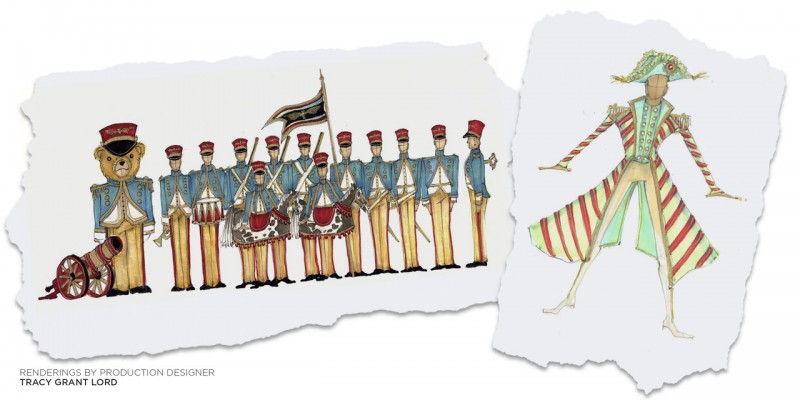Western classical ballet is still a very unfamiliar art form in India. But in recent years, promising talent has begun to emerge, often in dancers from disadvantaged or working-class families with no prior association with Western classical music or dance.
In the absence of live ballet performances, the entry point for most aspirants has been film, especially Bollywood, or an initial interest in other dance styles.
Kamal Singh, currently in his early twenties and from the outskirts of Delhi, is the son of a rickshaw driver. A ballet sequence in the 2013 Bollywood film ABCD: Any body can dance led him to train with a ballet teacher in Delhi, and three years later continued his studies at the English National Ballet School.
But the biggest hub for many newcomers to ballet has been Mumbai, India’s ‘city of dreams’, known for its thriving film industry.
From YouTube surfing to training in Paris
Dipesh Verma, from Siliguri, West Bengal, fell in love with ballet aged 13 after watching her teenage dance idol, Sophia Lucia, on YouTube. As the son of a grocer and day laborer, it was not easy for him to go against his parents’ expectations of pursuing a “safer” profession, such as medicine.
Manish Chauhan (center) trains with Dipesh Verma and Bobby Roy
Photo by Leslie Shampaine
At 15, he headed to Mumbai with the equivalent of $80 in his pocket, to train with famed Israeli-American ballet pedagogue Yehuda Maor at the Danceworx Performing Arts Academy. Verma often spent the night on train platforms and missed meals after grueling sessions.
As his training progressed, he applied to several schools abroad via video submission and finally chose the Marais dance school in Paris, where he currently has a scholarship. Now 20, Verma recalls his formative years in Mumbai: “It shaped my character; I grew up as a dancer and as a man.
A late start, but a passion for the athleticism of ballet
Bobby Roy, like Verma, is also a protege of Maor and a student at the Marais de Paris. The son of a traveling clothes salesman and a housewife, he moved from Delhi to Mumbai at age 17 to pursue his childhood fascination with dance. He had supportive parents and his father accompanied him for six months on his quest to find serious training in Mumbai – and they eventually found Danceworx.

Bobby Roy
Courtesy Roy
Roy had grown up dancing hip hop and mimicking the choreography he saw in Bollywood movies, so taking up classical ballet, a compulsory part of the Danceworx curriculum, was a novel experience. “I fell in love with her beauty,” says Roy. But he had to work extremely hard to make up for the lost years.
Starting late is a common theme for most classical ballet aspirants in India, but they are often driven by a sense of dogged determination.
Maor’s arrival at Danceworx six years ago revolutionized ballet pedagogy in Mumbai. He mentored most of the dancers mentioned in this story. Maor attributes young Indian men’s growing affinity for ballet to his athleticism. “That’s what many Indian male dancers see when they take ballet lessons: an athletic art form,” he says. “They don’t come to class with narrow or preconceived ideas about what ballet is or who should dance it.”
Acrobatic tricks and Netflix
This was certainly the case for Manish Chauhan, now 27 and a student at Peridance in New York, where he mainly studies ballet, as well as contemporary dance. Chauhan is the son of a taxi driver from Mumbai. He started doing acrobatic stunts ‘because the girls are impressed’, as he coyly says in the trailer for the upcoming film call me dancerby Leslie Shampaine and Pip Gimour, which documents her journey to ballet.

Manish Chauhan during a photo shoot for an international edition of She
Photo by Porus Vimadalal, courtesy of Chauhan
Chauhan also played a fictionalized version of himself in the Netflix Original Hindi 2020 movie Yeh Ballet, written and directed by Sooni Taraporevala. It traces the fascinating story of Chauhan and Amiruddin Shah (played by Achintya Bose), who were both mentored by Maor at Danceworx and overcame tremendous challenges to achieve their dreams. Shah is currently training in London at the Royal Ballet School.
A Growing Ballet Lineage
Although the majority of ballet students in India are the first in their families to explore this art form, this is not always the case. Taraporevala, for example, now a filmmaker in her 60s, studied ballet as a child in Mumbai with Tushna Dallas, who founded the School of Classical Ballet and Western Dance in 1966. Dallas’s daughter, Khushcheher Dallas, today perpetuates the pedagogical tradition.

Pia Sutaria
Courtesy of Sutaria
Among Tushna Dallas’ students is Pia Sutaria, who says her family has been extremely supportive of her pursuit of dance. She was inspired to take up ballet aged 5 after watching the 2000 British dance film Billy Elliot. A graduate of the Royal Academy of Dance in London’s Teaching Professional Dancers Diploma, Sutaria founded the Institute of Classical and Modern Dance in Mumbai in 2018, she says, “to fill the void that existed in the professional training of dance and ballet for young, talented performers in India.
Now 25, Sutaria has several young ballet hopefuls under her wing. The youngest, Vidhi Thakker, is 11; her family requested that she train at ballet schools in Canada and the UK.
Training hopes abroad
Elizabeth Gollar, 20, who lives in Dharavi, Mumbai, is the daughter of a lumberjack and a sweeper. His entry into dance was through waacking and lavani (a strongly rhythmic traditional song and dance originating from Maharashtra). Her flexibility was noticed by dancer Deshna Khanna, who presented Gollar at Danceworx in 2015, where she won a full scholarship.
Gollar recently passed the Royal Academy of Dance Intermediate Foundation exam and hopes to apply to ballet schools overseas for further training. However, finances are a constraint. “My family hasn’t completely agreed to support my dream yet,” Gollar says. “I made them look Yeh Balletand they understood me a little better afterwards.
Maor attributes the relative scarcity of high-caliber female ballet dancers to a “clash of cultures.” “Parents wouldn’t allow young girls to stay in the studio and work late,” he says. “As a result, they lack the additional training they will need to compete with other dancers around the world.”
Changing attitudes about ballet
Danceworx and the Institute of Classical and Modern Dance in Sutaria offer full scholarships to underprivileged young people willing to work hard in ballet. Newcomers also seem to be encouraged by the growing number of role models, mentioned here, despite making up only a tiny fraction of India’s 1.3 billion population. Add Netflix hit Yeh Balletthe call me dancer documentary already in post-production and the power of social media, and there will likely be subsequent waves of young Indians turning to ballet.
Roy points out that Bollywood, which attracts young people to dance, is itself beginning to incorporate classical ballet into its dance sequences, creating new job opportunities for ballet dancers in India.

Vidhi Thakker
Courtesy of the Thakker family
Sutaria agrees. Her students recently appeared in their first TV commercial, dancing neoclassical choreography while modeling Indian clothes for a fashion label. Sutaria herself has done gigs for nationally televised events and major magazines, mixing classical ballet with Indian fashion and culture, including Bollywood music.
“I would like to see the day when one of the best known ballets, which is an Indian story, The Bayadere, is danced here with Indian dancers,” says Maor. “The more people read articles and see performances and films about Indian dancers, the sooner we can attract audiences and financial support for our work.”




